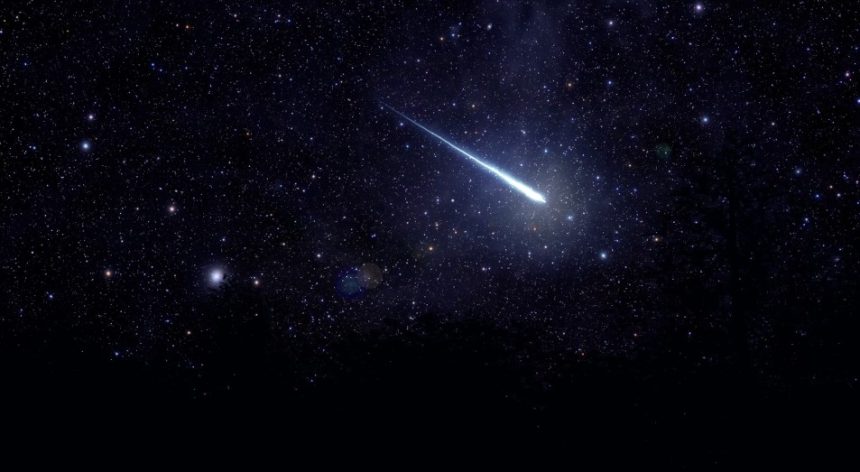Sky watchers across the UK and around the world are gearing up for one of November’s biggest elysian events, as the Leonid meteor shower reaches its long-awaited peak.
Active since 6 November, the periodic display is now at its strongest, offering the chance to spot as many as 10 firing stars per hour, depending on sky conditions.
This time’s caching is set to deliver a blend of presto, bright stripes, and occasional pistols as fractions of ancient comet debris burn up in Earth’s atmosphere.
For numerous astronomy suckers, the Leonids are a highlight of the afterlife night sky, known for producing some of the most dramatic meteor showers in history.
And other major meteor events in Britain, the Perseid activity earlier in the year also drew attention among UK stargazers, creating a growing interest in seasonal sky watching:
Why do the Leonids happen?
The display occurs every November when Earth passes through the fine trail left by Comet Tempel-Tuttle, a small but important icy body that completes a route around the Sun roughly every 33 years.
As our Earth moves through the comet’s debris field, bitsy patches hit the atmosphere at high speed, creating glowing stripes we know as meteors.
To put it simply, NASA explains: “A meteor is a space rock, or meteoroid, that enters Earth’s atmosphere. As the space rock falls toward Earth, the resistance, or drag, of the air on the rock makes it extremely hot.
What we see is a ‘shooting star.’ That bright streak is not actually the rock, but rather the glowing hot air as the hot rock zips through the atmosphere. When Earth encounters many meteoroids at once, we call it a meteor shower.”
Peak Leonid meteor shower times on 18 November
While the meteors may appear at any point during the night, specific cities have ideal windows for peak visibility. Below are the expected best times to watch:
What’s up, skywatchers?
The Leonid meteor shower peaks Nov. 16-18. Meteors will radiate from the constellation Leo in the eastern sky.
The shower runs through Dec. 2, but at its peak, you could see up to 10-15 meteors per hour in dark skies! pic.twitter.com/M04sownAto
— NASA JPL (@NASAJPL) November 15, 2025
- London: 4:00 AM – 7:00 AM
- Delhi: 5:30 AM – 6:30 AM
- New York: 4:00 AM – 7:00 AM
- Washington, DC: 3:00 AM – 8:00 AM
- Paris: 4:00 AM – 8:00 AM
- Dubai: 6:00 AM – 7:00 AM
- Toronto: 4:00 AM – 7:00 AM
- Tokyo: 4:00 AM – 6:00 AM
- Berlin: 3:00 AM – 8:00 AM
- Rome: 4:00 AM – 7:00 AM
For viewers in the UK, the early-morning hours before dawn are expected to offer the clearest opportunity, weather permitting, of course.
How to watch the Leonids?
The beauty of this event is how accessible it is. You don’t need telescopes, binoculars, or specialist gear; just a dark position, a clear view of the sky, and a little tolerance.
Astronomy suckers recommend giving your eyes about 20 twinkles to acclimate to the darkness for the stylish results.
To improve your chances of catching more meteors:
- Find a dark, open space away from streetlights and buildings.
- Lie back comfortably so you can see as much of the sky as possible.
- Use a sky-mapping app to locate the radiant point in the constellation Leo.
- Stay outside for a while—meteor rates often increase the longer you watch.
As Time and Date reminds stargazers: “Meteor showers appear to originate from the radiant, but meteors can appear in any part of the sky.” This means you don’t have to stare in one direction; meteors can flash anywhere overhead.
A perfect moment for stargazing fans
With long nights, cooler air, and the pledge of spectacular falling stars, the Leonids are one of the stylish openings for both seasoned sky watchers and casual bystanders to enjoy a bit of natural space rainfall drama.
Although this time isn’t anticipated to produce a meteor storm, a rare outburst occasionally associated with the Leonids, the steady sluice of presto, bright meteors remains a stunning sight.
Still, tonight and the early hours of hereafter offer your stylish chance to catch this elysian event in action, if shadows cooperate.
Whether you are an astronomy sucker or simply fancy a moment of quiet wonder under the night sky, the Leonids are well worth stepping outside for.






